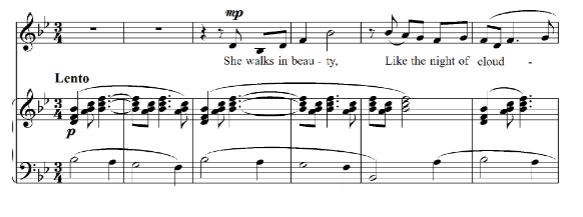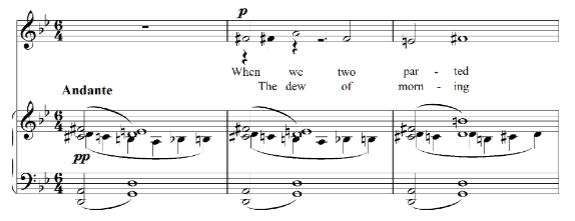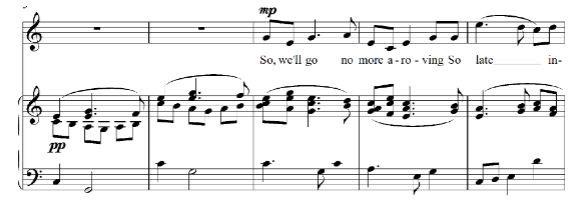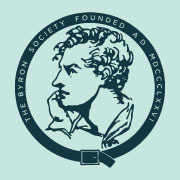In this blog, composer Brian Blyth Daubney describes the inspiration he finds in Byron’s poetry, and the circumstances which led to him composing three musical settings for Byron’s ‘She Walks in Beauty’, ‘When We Two Parted’ and ‘So We’ll No More Go A-Roving’. The music is available to listen to in the blog, along with the musical scores.
Listen to the soothing melodies as you read…
Marie, a mezzo-soprano, and I met in the 1960s and developed a mutual interest in song. We gave several concerts together locally. In 1962 she decided to visit Australia and while there accepted a position as teacher in Balwyn, Victoria. For a while we continued to communicate but our correspondence gradually ceased. In 1996 I was sent to examine in Singapore and during a three-week break decided to visit my relatives in Australia. While there I contacted Marie, whose name luckily was in the telephone book in Perth library, and went to stay for a few days with her.
On my return to the UK we resumed our frequent correspondence, now by email, which continued until her sudden death in the early 2000s.
These four love poems of Byron then attracted my attention and I set them in memory of our close, though interrupted friendship. The first song, She Walks in Beauty, is a simple reflection of her image in music, though her tresses were not raven as those in Byron’s poem but auburn. The serene key of B flat major is assigned to her gentle nature, as that of the loved one in the Byron poem. A brief passage in the relative minor key of G heralding Byron’s words that tender light Which heaven to gaudy day denies imply a brighter quality of her nature. But the tranquil opening mood is restored and maintained until the end of the song.

When We Two Parted reveals a much less peaceful mood. The lovers part, and the music reflects this in its tenser, more chromatic harmonic colour. The poet questions what their feelings would be in a reunion after long years. The song is left in a mood of uncertainty.

So We’ll Go No More A-roving ends the group. This is perhaps one of the best-known of all Byron’s poems. A farewell to the things left behind by time’s relentless passage, the inclusion of love amongst them, the setting can here also be construed as a lament for the loss of the joys of meeting again with one who has died.

Byron’s poems about his loves and friendships still exercise their influence on us after so many years and help to explain why he is still held in such high regard as one of our greatest poets.
View and download the musical scores, for instrument and vocals here: Three Byron Settings (2)
Brian Blyth Daubney.
All copyright for these musical settings remains with Brian Blyth Daubney, if you have any questions for the composer please email contact@thebyronsociety.com

